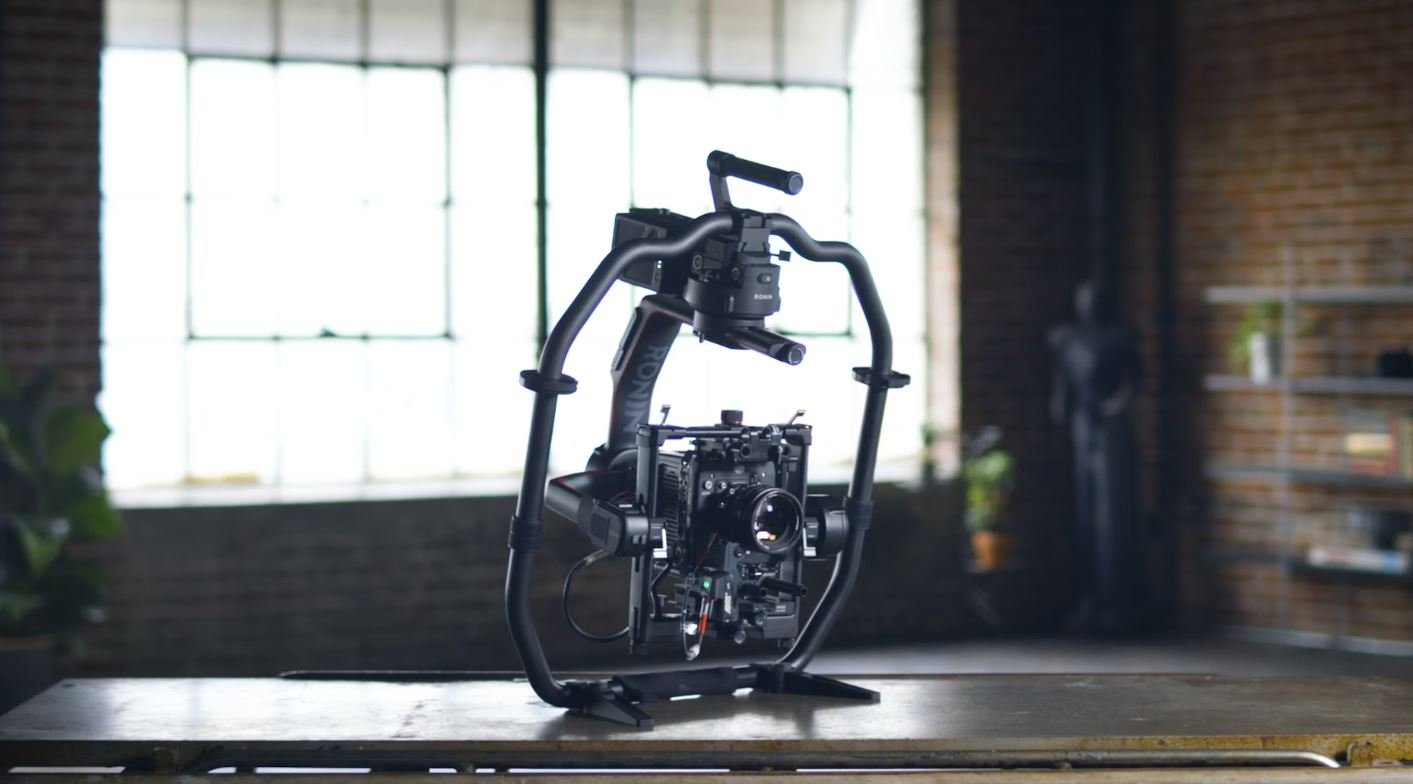What Is Audio Visual Aids?
Audio visual aids are tools and resources used in communication and presentations to enhance understanding and engagement through the use of both audio and visual elements. These aids can include various technologies such as slides, videos, sound recordings, projectors, and computer-based presentations.
Key Takeaways:
- Audio visual aids enhance communication and presentations by incorporating both audio and visual elements.
- Tools and resources can include slides, videos, projectors, and computer-based presentations.
- They improve understanding and engagement by appealing to multiple senses.
By combining auditory and visual stimuli, audio visual aids can improve the effectiveness of communication and enhance the learning experience.
Benefits of Audio Visual Aids
There are numerous benefits to using audio visual aids in various contexts:
- Enhanced understanding: Visual aids can aid in clarifying complex concepts and make information more accessible to the audience.
- Improved retention: When information is presented using audio and visual elements, it can be easier for the audience to remember and recall later.
- Increased engagement: Audio visual aids capture and retain the audience’s attention, making the presentation or communication more compelling.
By incorporating audio and visual elements, audio visual aids can cater to different learning styles and improve overall audience engagement.
Types of Audio Visual Aids
There are various types of audio visual aids available, depending on the nature of the presentation and the goals of the communicator:
- Slides: Slides are commonly used in presentations, displaying key points, images, and graphs.
- Videos: Videos can be used to demonstrate processes, showcase products, or present real-life examples.
- Projectors: Projectors can display large images or videos on screens, making it easier for a larger audience to view the content.
With advancements in technology, audio visual aids have become more diverse and accessible, offering presenters a range of options to enhance their communication.
Examples of Audio Visual Aids
To better understand the practical applications of audio visual aids, here are a few examples:
- PowerPoint presentations: PowerPoint is a widely used software that allows presenters to create visually appealing slideshows with accompanying audio.
- Document cameras: Document cameras can project real-time images of documents, books, or objects onto a larger screen for everyone to see.
- Whiteboards or blackboards: These classic tools allow presenters to visually illustrate concepts or write down important information during a presentation.
| Aid | Advantages | Disadvantages |
|---|---|---|
| Slides | Easy to create, visually appealing | May lack interactivity |
| Videos | Engaging, can demonstrate processes | May require proper equipment and editing |
| Projectors | Allows for large-scale visuals | Requires a darkened environment |
Conclusion
Audio visual aids play a crucial role in enhancing communication, presentations, and learning experiences. They provide a multi-sensory approach that improves understanding, retention, and engagement. By incorporating both audio and visual elements, presenters can make their messages more impactful and accessible to their audience.
| Usage | Percentage |
|---|---|
| Business presentations | 80% |
| Academic lectures | 65% |
| Training sessions | 92% |

Common Misconceptions about Audio Visual Aids
Paragraph 1
One common misconception about audio visual aids is that they are only used in educational settings. While audio visual aids like projectors and multimedia presentations are often utilized in classrooms, they have applications beyond just education. They can be found in businesses, conferences, entertainment events, and even in everyday life.
- Audio visual aids are not limited to classrooms
- Businesses and conferences also use audio visual aids
- Audio visual aids are present in entertainment events
Paragraph 2
Another misconception is that audio visual aids are a substitute for good communication skills. While audio visual aids can enhance communication, they should not be solely relied upon to convey a message. Effective communication involves a combination of verbal and non-verbal elements, and visual aids should be used as a complement to effectively convey information.
- Audio visual aids are not a replacement for communication skills
- They should be used as a supplement to communication
- Effective communication involves both verbal and non-verbal elements
Paragraph 3
Some people mistakenly believe that audio visual aids are costly and require advanced technical skills to operate. While there may be some audio visual aids that are expensive and complex, there are also more affordable options available that are user-friendly. Many audio visual aids, such as basic projectors and presentation software, can be easily operated by individuals with basic technical knowledge.
- Audio visual aids have a range of affordability
- They don’t always require advanced technical skills to operate
- Basic projectors and presentation software are user-friendly
Paragraph 4
A common misconception is that audio visual aids are limited to visual displays, such as slideshows or videos. However, audio visual aids encompass both visual and auditory elements to enhance the overall presentation. This could include background music, sound effects, live demonstrations, or even voiceovers. The combination of audio and visual elements helps to engage multiple senses and create a more impactful experience.
- Audio visual aids involve both visual and auditory elements
- Not limited to visual displays alone
- Engages multiple senses for a more impactful experience
Paragraph 5
Lastly, some people assume that audio visual aids are only effective for large audiences or presentations. This is incorrect. Even in a one-on-one setting, audio visual aids can enhance communication and improve understanding. Visual aids can help to clarify complex concepts, reinforce key points, and make the content more memorable. Regardless of the audience size, audio visual aids can be a valuable tool in conveying information effectively.
- Audio visual aids are not limited to large audiences
- They can be useful in one-on-one settings as well
- Visual aids help clarify concepts and reinforce key points

Introduction
Audio Visual Aids are powerful tools that enhance communication through the combined use of visuals and sound. From presentations in classrooms to promotional campaigns, audio visual aids have become an integral part of our daily lives. In this article, we explore various aspects of audio visual aids through a series of 10 captivating tables.
Table 1: Evolution of Audio Visual Aids
The table below showcases the evolution of audio visual aids throughout history, highlighting key milestones and advancements in technology:
| Year | Advancement |
|---|---|
| 1878 | Thomas Edison invents the phonograph, the first device capable of recording and playing back sound. |
| 1893 | Charles Francis Jenkins develops the Phantoscope, an early film projector. |
| 1920s | Introduction of synchronized sound in films revolutionizes the cinema industry. |
| 1939 | Bell Labs invents the first practical electronic television. |
| 1982 | Philips and Sony collaborate to release the Compact Disc (CD) format. |
Table 2: Benefits of Using Audio Visual Aids
Employing audio visual aids offers several advantages, as showcased in the table below:
| Benefit | Explanation |
|---|---|
| Enhanced Learning | Visuals and audio stimulate multiple senses, aiding in better comprehension and knowledge retention. |
| Increased Engagement | Audio visual aids capture attention and make content more engaging, leading to improved information absorption. |
| Improved Communication | Visuals and sound help convey messages effectively and facilitate understanding. |
| Memorable Presentations | Combining visuals and sound creates a lasting impact, making presentations memorable. |
Table 3: Usage of Audio Visual Aids in Education
The following table illustrates the various applications of audio visual aids in education:
| Application | Description |
|---|---|
| Interactive Whiteboards | Whiteboards with touch-sensitive screens enable interactive teaching, encouraging student participation. |
| Audio Lectures | Recording lectures allows students to revisit complex topics and enhances accessibility for those with auditory impairments. |
| Anatomical Models | Physical and virtual models help in teaching biology, anatomy, and medicine by providing a visual reference. |
| Virtual Labs | Simulations and virtual experiments offer a safe and cost-effective way to conduct lab exercises. |
Table 4: Impact of Audio Visual Aids on Advertising
The table below reveals the impact of audio visual aids on advertising campaigns:
| Statistic | Outcome |
|---|---|
| 65% | The increase in brand recall when video content accompanies an advertisement. |
| 42% | The higher likelihood of viewers following a call-to-action when audio is used along with visual elements. |
| 80% | The percentage of customers who feel audio enhances their shopping experience. |
Table 5: Popular Audio Visual Aids Technologies
This table presents some of the most widely used audio visual aids technologies today:
| Technology | Description |
|---|---|
| Projectors | Enables large-scale projection of visuals on screens. |
| Speech Recognition | Converts spoken words into written text, aiding transcription and accessibility. |
| Augmented Reality | Overlays digital content onto the real world, enhancing experiences and interactions. |
| Podcasts | Audio recordings distributed digitally, allowing for on-demand playback. |
Table 6: Usage Statistics for Audio Visual Aids
The table below provides usage statistics related to audio visual aids:
| Statistic | Percentage |
|---|---|
| Students who prefer visual learning | 65% |
| Companies using audio visual aids in presentations | 78% |
| Online sessions aided by audio visual aids | 92% |
| Presentations more effective with audio visual aids | 87% |
Table 7: Audio Visual Aids Tools for People with Disabilities
The table presents specific audio visual aids tools to assist individuals with disabilities:
| Disability | Audio Visual Aid |
|---|---|
| Hearing Impairments | Closed captions, sign language videos, and loop systems in auditoriums and theaters. |
| Visual Impairments | Screen readers, large-print materials, and audio descriptions in movies and TV shows. |
| Learning Disabilities | Interactive multimedia presentations and recordings with supplemental explanations. |
Table 8: Financial Impact of Audio Visual Aids
The financial impact of audio visual aids is demonstrated in the following table:
| Aspect | Financial Impact |
|---|---|
| Reduced Training Costs | Training through audio visual aids reduces costs associated with hiring trainers and organizing physical sessions. |
| Increased Sales | Well-executed audio visual aids in advertisements and product presentations contribute to higher sales figures. |
| Better Client Engagement | Interactive audio visual aid tools facilitate meaningful client interactions, leading to enhanced business opportunities. |
Table 9: Active Usage of Audio Visual Aids
The active utilization of audio visual aids in different scenarios is highlighted in the table below:
| Scenario | Usage |
|---|---|
| Classrooms | Presentations, multimedia displays, and interactive learning experiences. |
| Business Meetings | Slideshows, video conferences, and collaborative virtual collaboration tools. |
| Museums and Exhibitions | Audio tours, interactive displays, and immersive visual experiences. |
Table 10: Challenges in Implementing Audio Visual Aids
The following table outlines common challenges faced during the implementation of audio visual aids:
| Challenge | Description |
|---|---|
| Technical Issues | Hardware malfunctions, software compatibility, and technical skill requirements for operation. |
| Cost Constraints | Budget limitations affecting the purchase and maintenance of necessary audio visual aids equipment. |
| Training and Adoption | Ensuring individuals possess the skills to operate audio visual aids equipment effectively. |
Conclusion
Audio visual aids have evolved significantly to become indispensable tools across various domains, including education, advertising, and entertainment. Their benefits range from enhanced learning to increased engagement, and their impact is demonstrated through statistics and real-world applications. While challenges exist in implementing audio visual aids, it is evident that their positive influence on communication and information dissemination cannot be underestimated.
Audio Visual Aids – Frequently Asked Questions
What is the definition of audio visual aids?
An audio visual aid refers to any teaching or learning material that combines both sound and visual elements to enhance the educational experience. These aids can include slideshows, videos, audio recordings, charts, diagrams, models, and other multimedia resources.
How can audio visual aids be used in education?
Audio visual aids are widely used in education to facilitate learning and improve understanding. They can be used by teachers during classroom instruction to present information in a more engaging and interactive manner. Students can also use audio visual aids to enhance their learning by accessing educational videos, interactive presentations, and multimedia resources.
What are the advantages of using audio visual aids?
Using audio visual aids in education offers several advantages. They help to capture attention and maintain interest, making learning more enjoyable and effective. Audio visual aids can also simplify complex concepts, facilitate understanding, and cater to different learning styles. Furthermore, they promote interactive learning, improve retention, and enhance communication skills.
What are some examples of audio visual aids?
Examples of audio visual aids include PowerPoint presentations, educational videos, interactive whiteboards, projectors, digital textbooks, virtual reality simulations, educational apps, and online multimedia resources. These aids can be used across various subjects and educational settings.
How can audio visual aids be created?
Audio visual aids can be created using various tools and software. For slideshows, programs like Microsoft PowerPoint or Google Slides can be used. Video content can be produced using video editing software like Adobe Premiere Pro or iMovie. There are also online platforms and apps available that allow for the creation of interactive and multimedia resources with ease.
What factors should be considered when using audio visual aids?
When using audio visual aids, it is important to consider the audience, the learning objectives, and the suitability of the aid for the topic being covered. The aids should be visually appealing and easy to understand, ensuring that the audio and visual elements complement each other. Additionally, the aids should be properly integrated into the teaching or learning process to enhance rather than distract from the educational experience.
Are there any limitations of using audio visual aids?
While audio visual aids offer numerous benefits, they also have certain limitations. For example, not all students may have access to the necessary technology or resources required to fully utilize audio visual aids. Additionally, some aids may be time-consuming to create, and their effectiveness can depend on the proficiency of the user. It is important to consider these limitations when incorporating audio visual aids into education.
How can audio visual aids be effectively integrated into classroom instruction?
To effectively integrate audio visual aids into classroom instruction, teachers can plan ahead and ensure that the aids are aligned with the curriculum and learning objectives. They should be used strategically to support and reinforce key concepts. It is also important to provide proper explanations, encourage student engagement, and evaluate the effectiveness of the aids in achieving the intended learning outcomes.
What are some best practices for using audio visual aids?
Some best practices for using audio visual aids include keeping the content concise and using clear visuals, appropriate fonts, and suitable color schemes. It is important to use high-quality audio and video recordings, and ensure that the aids are accessible to all students. Additionally, educators should regularly update and adapt the aids based on feedback and new educational developments.
Where can I find audio visual aids for educational purposes?
Audio visual aids for educational purposes can be found in various places. Online platforms, educational websites, libraries, and educational institutions often provide access to a wide range of audio visual aids. Additionally, educational conferences, workshops, and professional development events may offer opportunities to discover and learn about new audio visual aids and their applications.




